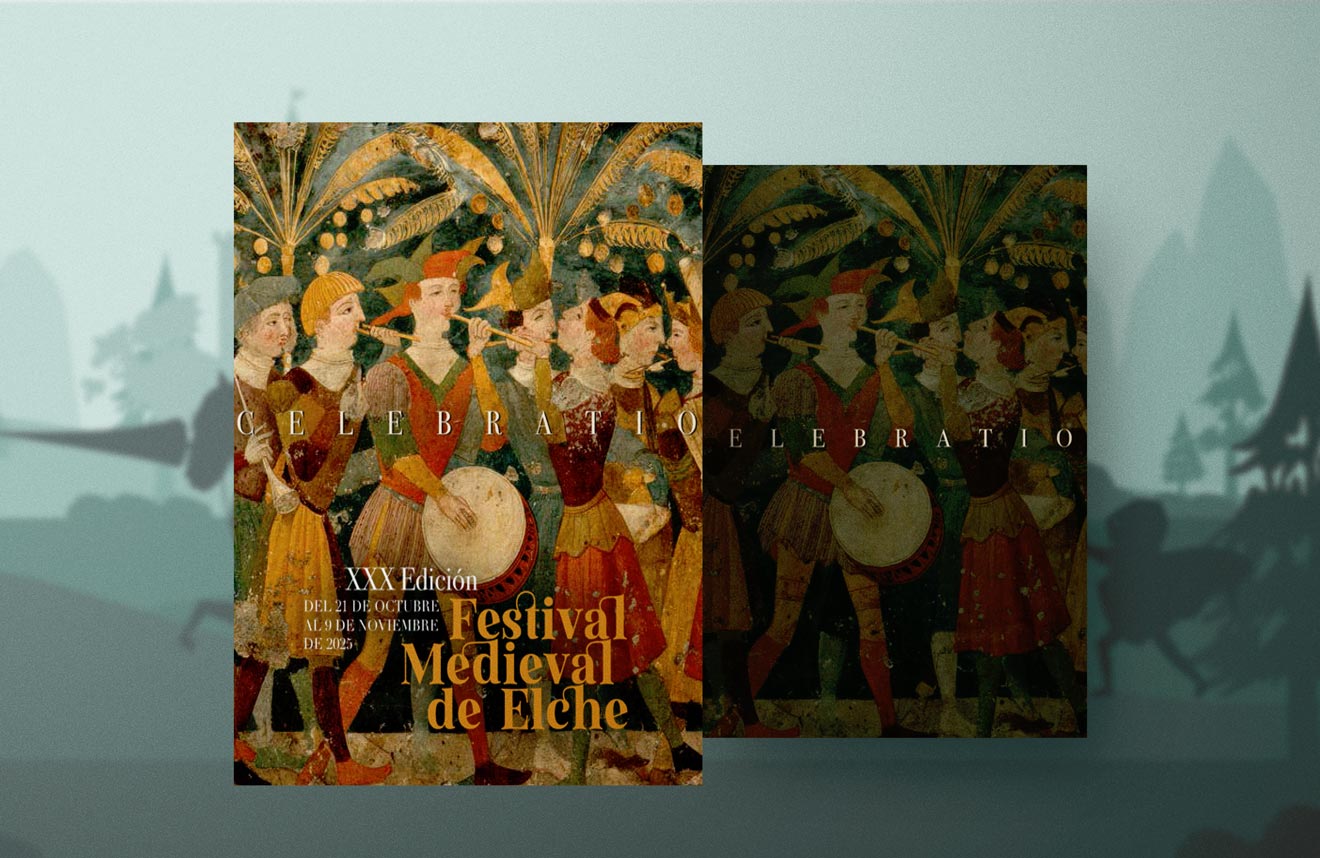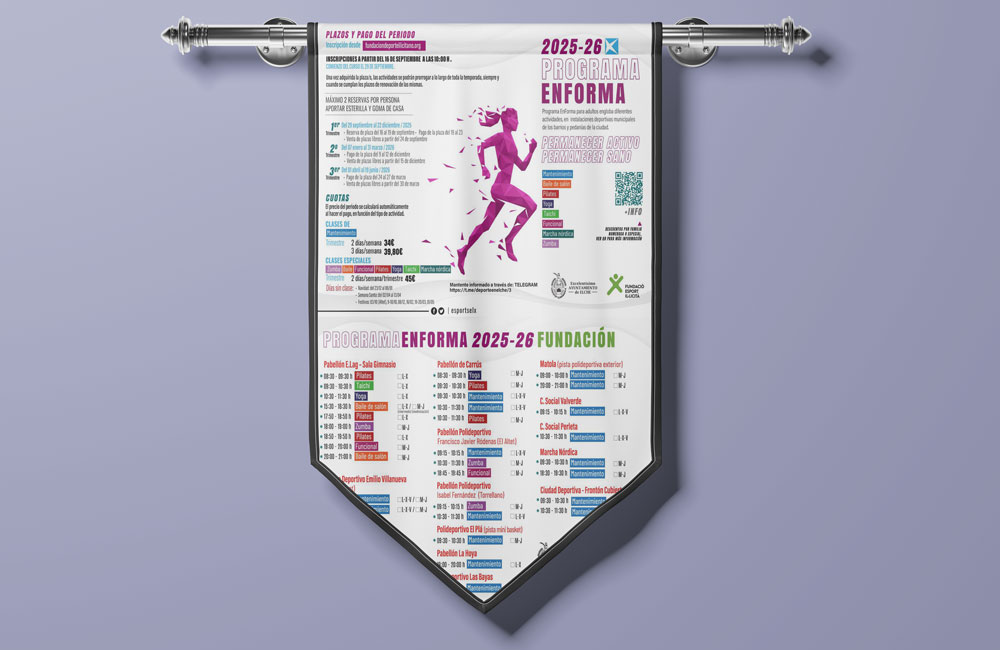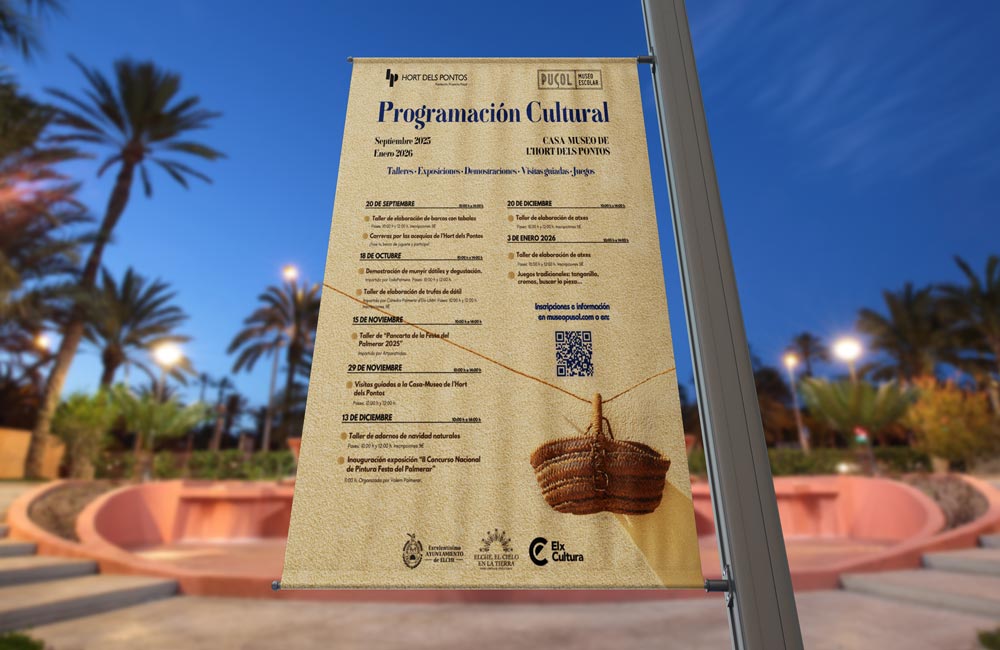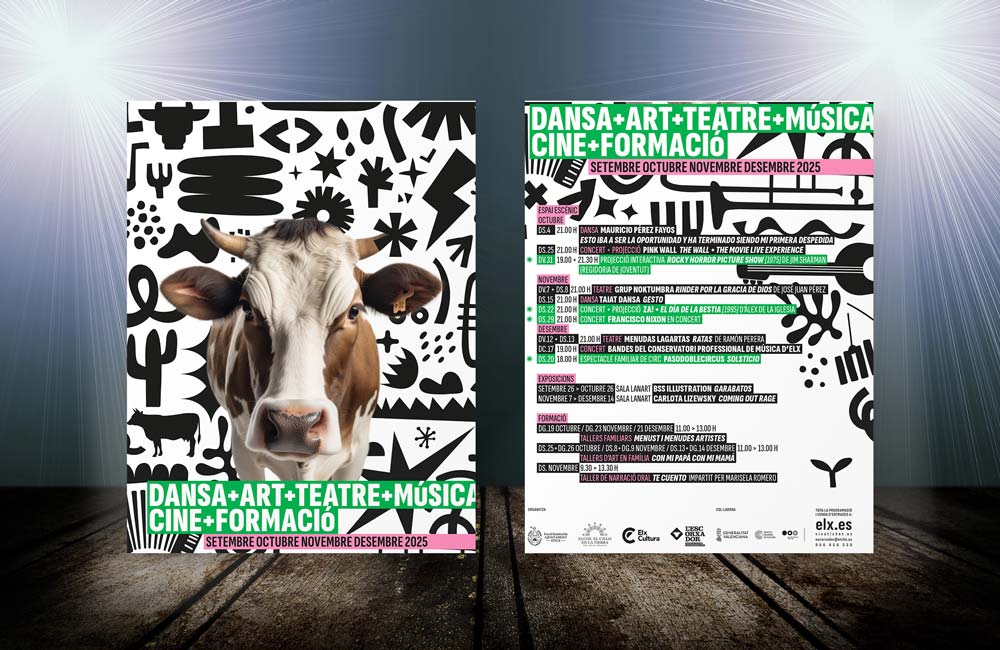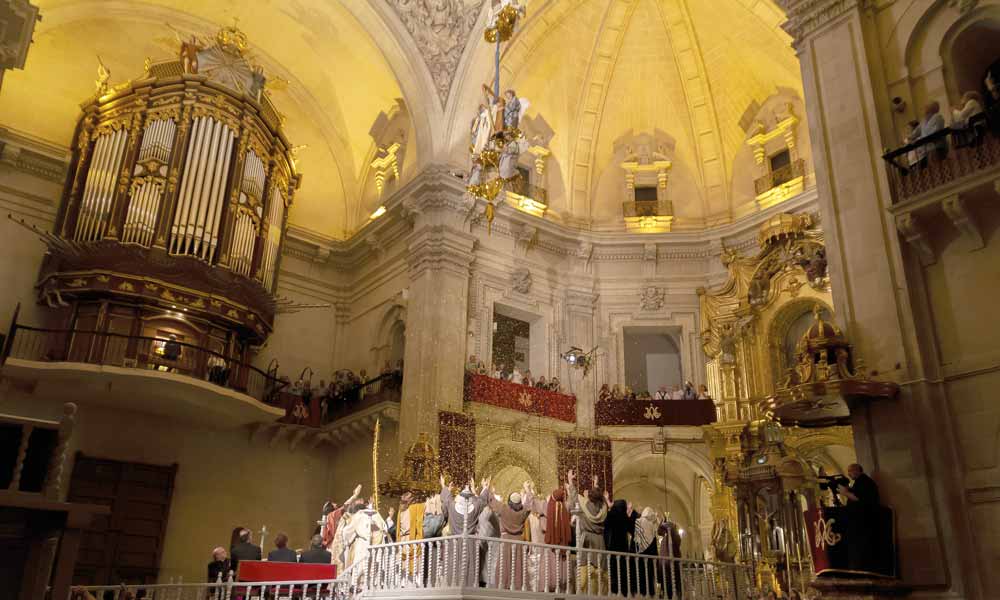
Misteri Play of Elche: Cultural Treasure of the People of Elche
The Mystery Play of Elche, also known as the Misteri d'Elx in Valencian or Misterio de Elche in Spanish, is a sacred lyrical religious drama that reenacts the Dormition, Assumption, and Coronation of the Virgin Mary.
Divided into two acts, the play is performed on the 14th and 15th of August inside the Basilica of Santa María. The first day is called "La Vespra" (The Eve), and the second day is known as "La Festa" (The Feast). There are also extraordinary performances in October during even-numbered years.
Misteri d´Elx
- Origins and History
- The Noble Families of Elche
- The Perpinyà Family
- The Caro Family
- The Brotherhood of Our Lady of the Assumption
- Performance
- La Vespra (The Eve)
- La Festa (The Feast)
- The Music of The Misteri d´Elx
- Performance Dates
- Regular Performance
- Extraordinary Performances (in even-numbered years):
Origins and History
The origins of this play date back to the second half of the 15th century, although in the city of Elche, there is another theory that links it to the conquest of Muslim Elche in 1265 and the discovery of the image of the Virgin inside a wooden chest on December 29, 1370, in Santa Pola.
However, recent research on the play in Elche and medieval theater in general indicates that its origin can be traced back to the mid-15th century. This is primarily due to a significant increase in Assumption-themed theatrical performances during that specific period.
The Noble Families of Elche
Tracing its beginnings through the aforementioned origins, it is concluded that the play was organized by noble families in the local community, such as the Perpinyà or Caro families.
In fact, in the earliest known documentation, the will of Isabel Caro, an Elche resident, included provisions to continue the "Grand Fiesta and Solemnity" celebrated by the religious authorities of the time in the Basilica of Santa María in honor of the image of the Assumption that Isabel Caro possessed. After her death, the image was transferred to the Hermitage of San Sebastián.
The Perpinyà Family
The Perpinyà or Perpiñán family appeared in Elche alongside the troops accompanying King James I during the conquest and quickly became one of the most prominent lineages in the city. They held numerous possessions, and their members occupied high positions in both civil and ecclesiastical spheres, representing all the positions of power of the time. According to a reference by historian Juan Gómez Brufal, in the late 15th century, Pere Perpinyà claimed his rights to the protection of everything related to the "Lady Saint Virgin" and, therefore, the organization of the August Festival.
Throughout the history of the Mystery Play, a close relationship with the Perpinyà family can be observed. Their ancestral house still stands in Plaza de Santa María, facing the main entrance of the temple. In 1530, Lluís Perpinyà, on behalf of the Brotherhood of Our Lady of the Assumption, requested financial assistance from the Elche Council to gild "the seat where the Assumption takes place," one of the scenic elements of the performance.
Another member of the Perpinyà family, Lluís Perpinyà, brother of the famous Jesuit orator Pere Joan Perpinyà (there is a street in Elche named after him), provides information about the aerial devices used in the MISTERI through his correspondence. Claudià Felip Perpinyà is the author of the first Spanish translations of the text of the Festa, carried out in 1700 and 1741, respectively, to serve as a guide for the spectators of the performance. This detail is significant as it indicates that this member of the Perpinyà family had access to the script or consueta of the play, zealously guarded in the municipal council's "three-key box."
The Caro Family
The other noble family closely associated with the image of the Virgin of Elche over the centuries is the Caro family. As mentioned earlier, the first documented evidence of the Assumption celebration is a will from a member of this family, Isabel Caro.
According to this document, dated July 9, 1523, and preserved in the Archive of the Basilica of Santa María (currently displayed in the Museum of the Virgin of the Assumption, Patroness of Elche), Isabel Caro distributed her belongings and left a series of pious legacies for the benefit of her soul. One of these legacies stands out: she herself owned an image of the Virgin in her home, which was annually carried in a solemn procession by the Elche priests to the Basilica of Santa María on the eve of the Assumption, during the Completas (Evening Prayer). The document states that a "grand feast and solemnity" was held in honor of the Virgin there.
In order to ensure the continuation of this celebration by the religious authorities of the city, Isabel Caro bequeathed twenty-eight sueldos and four dineros censales. If she died without heirs, the aforementioned image was to be deposited in a Franciscan religious house to be established in a property owned by the testator on Calle Mayor in the town. This street has preserved to this day the hermitage of San Sebastián, where the image of the Virgin of the Assumption was venerated until its final transfer to the Basilica of Santa María in 1648.
The Brotherhood of Our Lady of the Assumption
There is evidence of the existence of a brotherhood called the Brotherhood of Our Lady of the Assumption in 1530, located in the Hermitage of San Sebastián. This brotherhood was responsible for the preparations for the festivity. Its viability depended on the contributions of its members, the support of the local council, and annual grants. Despite the efforts made by the latter, the MISTERI d'Elx was on the verge of disappearing in the late 16th century.
However, in 1609, the Town Council took charge of the play's representation and funding. They approved various taxes, such as the moltura (a type of grain tax) and the sale of meat, but one tax stood out above the others: the so-called "arroba of oil," which consisted of an arroba (around 12 liters) of oil from each of the soap factories in Elche, with the proceeds dedicated to the Virgin. It should be noted that the soap industry was very powerful during that time, between the 16th and 18th centuries. The revenue was primarily used to pay the salaries of musicians and singers and maintain the stage machinery.
 Basílica of Santa María, where the performance of the Misteri d'Elx takes place.
Basílica of Santa María, where the performance of the Misteri d'Elx takes place.
Despite these efforts, the continuity of the play was once again at risk due to the prohibition of theatrical performances inside churches by the Council of Trent. It was Pope Urban VIII who, in 1632, granted the people of Elche permission to continue with the representation through a papal bull. This was one of many conflicts that arose between the Civil and Ecclesiastical authorities regarding the MISTERI. In 1700 and 1734, the dispute escalated significantly for various reasons, but ultimately the Town Council prevailed, invoking the customs and historical traditions of the city.
Another significant crisis occurred in the late 18th century due to the prohibition of the "Judiada" scene because of the altercations it caused, and in the early 19th century, the suppression of the Elche musical chapel. This led to a period of decline, worsened at the end of the 19th century by the scarcity of economic resources, the instability of municipal positions such as the Chapel Master, and, above all, the lack of interest from many residents of Elche.
The revival came thanks to the efforts of the scholar Pere Ibarra i Ruiz, who founded the Junta Protectora de la Festa de Elche (Protective Board of the Elche Festival) in 1924. This led to a scenic and musical revision of the MISTERI. The score was refined by the Alicante-born musician Oscar Esplá, who, among other things, restored the "Judiada" scene. This period culminated in the MISTERI being granted the title of National Monument by the government of the Second Spanish Republic in 1935.
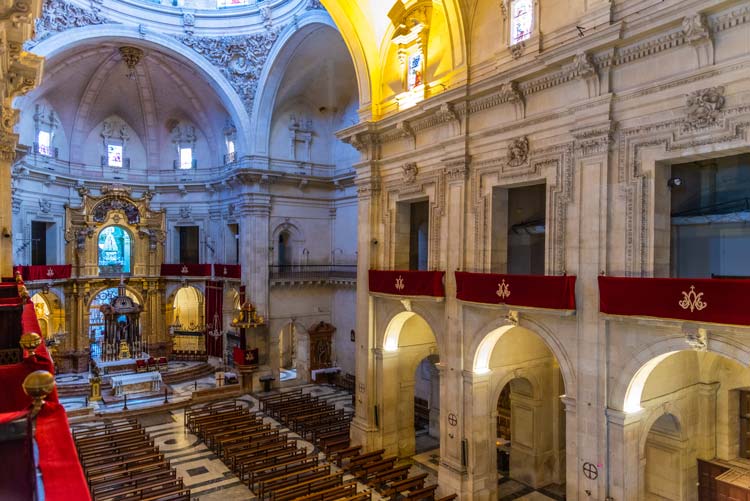 Interior of the Basilica of Santa Maria where the Misteri d'Elx is performed.
Interior of the Basilica of Santa Maria where the Misteri d'Elx is performed.
Once the restoration was completed, the board was transformed into the Patronato Nacional del Misterio de Elche (National Board of the Mystery of Elche) in 1948. Subsequently, in 2005, the Patronato del MISTERI d'Elx (Board of the MISTERI d'Elx) was established by the Valencian Parliament. The expenses are shared among various organizations, with notable contributions from the Valencian Government, the Elche City Council, and the Provincial Council of Alicante.
The MISTERI d'Elx has received numerous awards and recognitions, most notably being proclaimed a Masterpiece of the Oral and Intangible Heritage of Humanity by UNESCO on May 18, 2001.
Performance
Each and every character in the play is portrayed by men, respecting the liturgical-medieval origin of the performance, which expressly prohibited the participation of women in this type of representation. The text of the MISTERI, with the exception of some verses in Latin, is written entirely in Old Valencian, and the music is a blend of styles from different periods, including Medieval, Baroque, and Renaissance.
La Vespra (The Eve)
On the first day of the MISTERI, La Vespra, the Virgin Mary and her entourage, consisting of Mary Salome, Mary Jacobe, and some angels, enter through the main entrance of the Basilica of Santa María and ascend the ramp that starts at the main door of the temple and leads to the stage or "cadafal" erected at the crossing.
Once on the cadafal, Mary kneels on a bed and expresses her desire to see Jesus soon: (Text in Valencian)
del meu car Fill ple d´amor,
tan gran que no ho podria dir
on, per remei, desig morir.
In response to her prayer, the sky opens its doors and sends a messenger. An angel descends inside the "Mangrana" (actually a cloud), a device that appears closed and, after descending a few meters, opens into eight sections or wings. The child portraying the angel carries a golden palm in his hands and assures Mary that her desires will soon be fulfilled: (Text in Valencian)
Mare del Rei celestial,
jo us port saluts e salvament
del vostre Fill omnipotent.
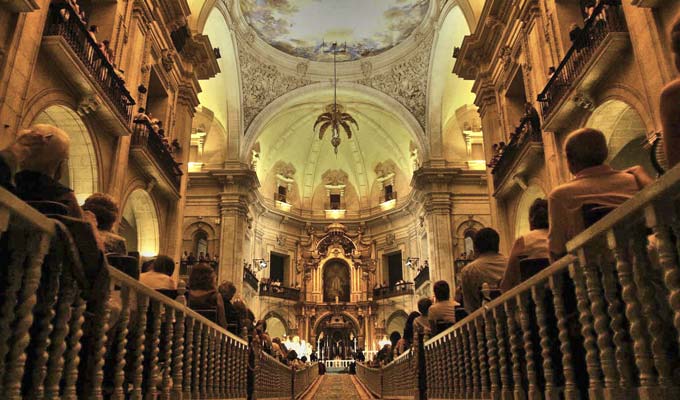
The angel hands Mary the palm and instructs her to carry it at her funeral. As the angel returns to heaven, he confirms Mary's request to see the apostles one last time. Saint John arrives and is entrusted with carrying the celestial palm. Then Saint Peter appears, represented by a priest, holding symbolic keys.
Afterward, the rest of the apostles, except for Saint Thomas, appear. Three of the disciples are initially found on the walkway and express their surprise at being miraculously brought from their respective places of preaching to Jerusalem: (Text in Valencian)
Senyor de tots los creats!,
Cert és aquest gran misteri
ser ací tots ajustats.
Gathered around Mary, the apostles witness her death. The child portraying Mary is replaced by the image of the Virgin of the Assumption lying on a bed, with a mask covering her closed eyes. From this moment on, she becomes the center of attention and devotion for the people of Elche. After a hymn of veneration by the disciples, the Araceli descends from heaven, announcing the future resurrection of Mary: (Text in Valencian)
a nós, àngels, seguireu.
Seureu en cadira real
en lo regne celestial.
The Chief Angel of the Araceli, also a priest, takes Mary's soul, symbolized by a small image, and carries it to heaven. This concludes the first part of the MISTERI. On the same night, from August 14th to 15th, the "Nit de la Roà" takes place.
La Festa (The Feast)
The second day of the MISTERI, called La Festa, takes place on August 15th, following the solemn Vespers of the Assumption. The preparations for Mary's burial are interrupted by some Jews who attempt to seize her body: (Text in Valencian)
nos procura deshonor:
anem tots a pas ciutat,
no comportem tal error.
The apostles and Jews struggle on the walkway, and when one of the apostles tries to take Mary's body, he is miraculously paralyzed. Repentant and converted, the Jews request baptism after professing their belief that Mary is the Mother of God: (Text in Valencian)
que és la Mare del Fill de Déu:
Batejau-nos tots en breu,
que en tal fe viure volem.
Together, they perform the burial of the Virgin through a procession that symbolically transfers her body from her house to the Valley of Jehoshaphat. Placed in the tomb located at the center of the stage, the Araceli descends from heaven once again to reunite the soul with the lifeless body of the Virgin. Thus, the resurrection of the Mother of God occurs, and she begins her ascent to heaven surrounded by angels.
During her ascent, she is surprised by the apostle Saint Thomas, who apologizes for his delay due to preaching in distant India: (Text in Valencian)
Mare de Déu omnipotent.
Vós m´hajau per excusta
que les Índies m´han ocupat.
Madre de Dios omnipotente.
Vos me deis por excusado
que las Indias me han ocupado.
Finally, the Holy Trinity receives Mary at the gates of heaven, and the Eternal Father crowns her as the Queen of Creation: (Text in Valencian)
a reinar eternament,
on tantost, de continet,
per Nós sereu coronada.
a reinar eternamente,
donde enseguida, inmediatamente,
por Nos seréis coronada.
This moment represents the final apotheosis of the MISTERI, accompanied by the ringing of bells, fireworks, the tutti of the organ, and the applause and cheers of the singers and spectators. It is a moment when devotions and emotions flourish in all those present. Everyone leaves the temple expressing their desire, passed down from generation to generation, to perpetuate the Festa de la Mare de Déu (Feast of the Mother of God).
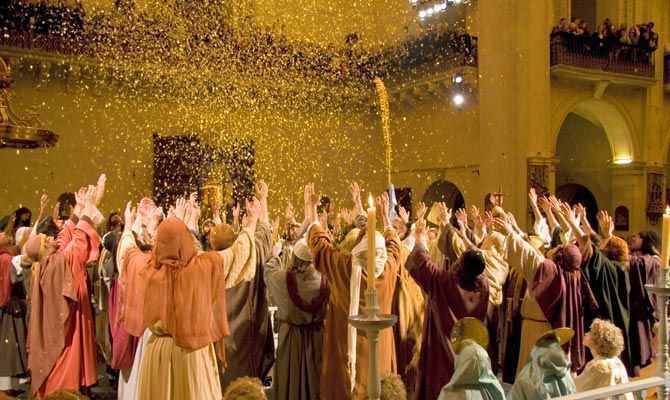
At this moment, the Araceli descends again to reunite Mary's soul with her body and takes her to heaven, resurrected. The Assumption of the Virgin is interrupted by the apostle Saint Thomas, who asks for forgiveness for his delay in preaching in distant India.
As the sky opens again, the Holy Trinity appears in another aerial contraption. The Father places an imperial crown on the Virgin's head. Mary is crowned as the Queen of Creation. The Gloria Patri is sung along with applause from the numerous spectators. This marks the end of the MISTERI d'Elx.
The Music of The Misteri d´Elx
One of the most notable features of the MISTERI d'Elx is its music. Due to the characteristics of its melodies, its origins can be traced back to different cultures.
The songs in the MISTERI can be classified as monodic and polyphonic. Among the twenty-six musical pieces recorded in the consuetas (liturgical books) from 1709 and 1722, ten are monodic and sixteen are polyphonic, although in
both cases, there are repetitions of melodies with different literary texts (Gómez, 1986, pp. 255-163).
Furthermore, there is documentary evidence of the existence of a chapel of instrumentalists and singers in the Basilica of Santa María that reached its peak in the 18th century. This chapel included players of instruments such as shawm, cornet, flute, oboe, sackbut, horn, violin, and many others, as well as professional singers. This musical chapel ceased to exist in 1835 to ensure the continuity of the MISTERI's representation.
Performance Dates
Regular Performance
Regular Rehearsals: August 11th and 12th at 10:30 PM, August 13th at 5:30 PM (Full Performances)
Oficial Performances: August 14th at 6:00 PM, first part of the MISTERI, La Vespra, and August 15th at 6:00 PM, second part of the MISTERI, La Festa.
Extraordinary Performances (in even-numbered years):
Regular Rehearsals: October 29th and 30th at 10:00 PM (Full Performances)
Oficial Performances: November 1st at 10:00 AM, first part of the MISTERI, La Vespra, and November 1st at 6:00 PM, second part of the MISTERI, La Festa.
There are available tickets for wheelchair users.
Tickets can be purchased at the Casa de la Festa and through Instanticket. Box office hours at the Casa de la Festa are as follows: Monday to Thursday from 10:00 AM to 1:00 PM and from 5:00 PM to 8:00 PM. Fridays from 10:00 AM to 1:00 PM. The address of the Casa de la Festa is: Carrer Major de la Vila, 27.
More Information misteridelx.com.










